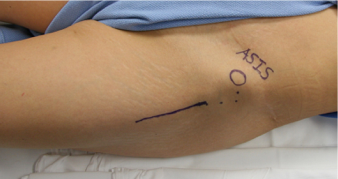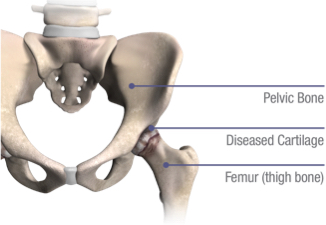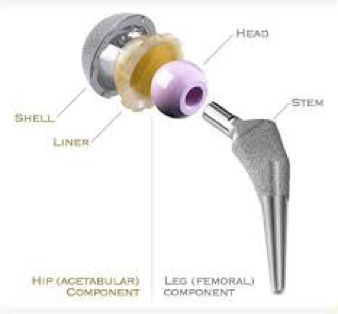Total Hip Arthroplasty: What is Direct Anterior Approach Hip Replacement Surgery?
Total hip arthroplasty is a surgical procedure in which cartilage and bone that were damaged by arthritis are removed from the hip joint and replaced with artificial joint components. This can help relieve hip joint pain from arthritis and restore the normal alignment and function of your hip. In December of 2013, Dr. Stewart transitioned to using the direct anterior approach for hip replacement surgery. He now performs greater than 99% of his hip replacements through this method. The direct anterior approach hip replacement is becoming an increasingly popular method for performing total joint replacement surgery due to the numerous benefits it provides. The approach is the method an orthopedic surgeon uses to get to the hip joint for hip replacement surgery. The direct anterior approach is a surgical technique that allows the orthopedic surgeon to access the joint where the hip pain is on the anterior surface, which is diagrammed below.

PAIN POINTS & Arthritis
What is Degenerative Joint Disease (DJD)?
Degenerative joint diseases (DJDs) are chronic conditions, often resulting in hip pain and the loss of an active lifestyle and quality of life. DJDs may result in a person needing hip replacement.
There are different types of DJD that can affect the hip, including:
- Osteoarthritis (OA), in which cartilage wears down over time
- Post-traumatic arthritis, which results from a severe fracture or dislocation of the hip
- Rheumatoid arthritis (RA), an inflammatory arthritis of the joints
- Avascular necrosis (AVN), a condition where the ball or femoral head of the hip joint has lost a healthy supply of blood flow causing the bone to die and the femoral head becomes misshaped
- Hip dysplasia, a condition where bones around the hip joint did not form properly, which may cause joint misalignment and hip pain
THE CAUSE
What Causes Degenerative Joint Disease?
The risk of developing symptomatic, degenerative joint disease, or arthritis, is influenced by multiple factors such as age, gender, and inherited traits that can affect the shape and stability of your joints. Other factors that can contribute to hip pain and joint disease include:
- A previous hip injury causing arthritis
- Repetitive strain on the hip
- Improper joint alignment
- Being overweight
- Exercise or sports-generated stress placed on the hip joint


TREATMENT
Benefits of the Direct Anterior Approach Hip Replacement Surgery Include:
- Less muscle damage and hip pain
- Faster recovery
- Reduced risk of hip dislocation
- More accurate component positioning
- Fewer restrictions
Recovery from Direct Anterior Approach Hip Replacement Surgery:
Most patients who undergo direct anterior approach hip replacement surgery are able to bear weight as tolerated on the surgical leg immediately after surgery. Dr. Stewart may put you on a weight-bearing restriction for a few weeks to reduce your risk of developing a stress fracture, however, this is quite rare. The nursing staff and physical therapists will assist you with walking shortly after hip surgery. Most of our patients use a walker for the first 1-2 weeks and then gradually transition to a cane, and eventually to no-gait aids. Generally, patients who undergo direct anterior total hip joint replacement surgery stay in the hospital one night and then go home the next day. We will arrange for you to undergo outpatient physical therapy 1-2 times per week for the first 3-4 weeks after surgery. We put all of our patients on a blood thinner postoperatively to reduce the risk of developing a blood clot. You will have a postoperative follow-up appointment with Dr. Stewart 10-14 days after your direct anterior approach surgery. Orthopedic Surgeon, Dr. Stewart, serves patients in the Altoona, Eau Claire, and Chippewa Falls area and is ready to talk with you today.
For more detailed postoperative recovery instructions, please see our patient resources page.




